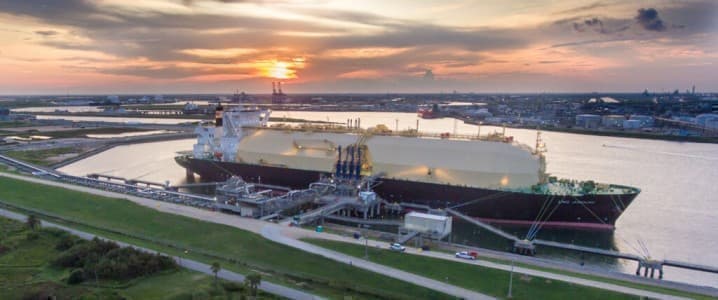Utilities and natural gas traders have been keeping the highest volumes of liquefied natural gas (LNG) at sea in two years as onshore gas terminals are full, and traders look to profit from an expected additional spike in gas prices in Europe and Asia when winter comes. While it’s common for crude traders to hoard vessels waiting to profit by selling the oil later, stocking up on LNG is not a common practice because the fuel evaporates over time.
However, desperate times call for desperate measures: the energy crisis and gas crunch in Europe are so acute that traders are even willing to take the chance of storing LNG on ships and seeing some of the fuel evaporate.
As of early September, the volume of LNG stored on carriers at sea was around 1.4 million tons – the highest such floating storage in two years – according to data from energy intelligence provider Kpler cited by Bloomberg. To put this into perspective, the current amount of floating LNG stocks is almost equivalent to the LNG volumes Spain imported in August. Spain has the highest number of import regasification terminals in Europe -six.
After posting records earlier this year, natural gas prices in Europe and Asia have room for further upside as winter approaches, and Russia continues to choke pipeline supply to Europe. This would make handsome profits for traders who are now hoarding LNG in floating storage.
Related: Large Crude Build Sends Oil Prices Tumbling
Still, floating storage may not have much capacity to rise, considering that the LNG carrier market is very tight with the rush to LNG after Russia weaponized pipeline gas supply. There is another reason why LNG volumes at sea are rising—import terminals in Europe are maxed out as governments rush to replace as much Russian pipeline gas as possible in order to fill storage sites and possibly avoid rationing.
The EU hit its 80% full gas storage target in early September, earlier than planned. As of September 8, the EU gas storage was nearly 83% full, according to data from Gas Infrastructure Europe.
However, storage alone would not be enough to see Europe through the end of the coming winter.
“The overshoot signals potential relief for prices in the short term, but storage alone is not enough to meet winter demand. The threat of shortages remains – an unexpected cold snap could quickly drain inventories if imports do not keep pace,” Aurora Energy Research said last week.
Europe cannot rely on storage only, it needs continuous flows of gas. Since Russia isn’t supplying much and even threatens to stop supplying all energy products if the West introduces price caps, the additional volumes should come via pipelines from Norway and Africa, and LNG from the U.S. and anywhere else that’s not Russia.
Even China is reportedly reselling LNG to Europe as prices surge.
“The gas market will be tight through this winter come what may, with the weaponisation of Nord Stream just one of the innumerable variables in play,”
Simon Flowers, Chairman and Chief Analyst at Wood Mackenzie, said last week.
Meager Russian flows or a cold winter – or both – “will test the energy system’s flexibility and resilience to the absolute limits and push prices higher still,” Flowers added.
“Every lever is having to be pulled to draw gas into the system at whatever the cost. Power systems will have to bring on rarely used coal and oil plants held as strategic reserves, regardless of carbon intensity. Even then, governments may have to ration gas and power selectively to dampen demand,” WoodMac’s chief analyst said, days before Russia’s gas giant Gazprom announced Nord Stream is out indefinitely.
By Tsvetana Paraskova for Oilprice.com
More Top Reads From Oilprice.com:
- China's Annual Oil Demand Could Drop For The First Time In 20 Years
- The UK’s New Prime Minister Considers Lifting Fracking Ban
- Oil Prices Rise Despite Economic Concerns


















